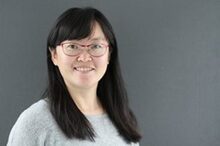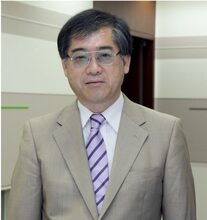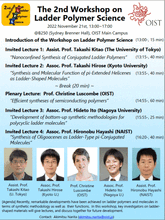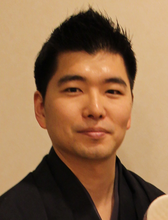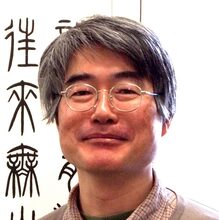Past Events
[Special Talk] 医学的立場から見た3D映像 by Prof. Takashi Fujikado (Graduate School of Frontier Biosciences, Osaka University; Center for Information and Neural Networks)
2023-04-14[Special Talk] 多様な環境で活躍する研究者を支援する by Ms. Hiroyo Clemente (Office of the Dean of Research, OIST)
2023-04-14Special Public Session (only in Japanese)| Friday, April 14, 2023
15:00 – 15:30 Special Talk: 多様な環境で活躍する研究者を支援する (Helping researchers thrive in a diverse environment)
JST-OIST Joint Symposium on Circularly Polarized Luminescence and the Related Phenomena
2023-04-14 to 2023-04-15| JST-OIST Joint Symposium on Circularly Polarized Luminescence and the Related Phenomena |
[Seminar] "Single-molecule fluorescence microscopy" by Dr. Xiaomin Liu (Max Planck Institute for Polymer Research, Germany)
2023-03-08Title: Single-molecule fluorescence microscopy
Abstract: The research in my group focuses mainly on the development of single-molecule fluorescence microscopy techniques, based on new types of fluorescence dyes and advanced laser systems. Such microscopy techniques could not only provide optical super-resolution imaging with nanometer-scale resolution, but also enable 2D/3D molecular dipole direction probing. Many applications with single-molecule sensitivity, such as material and bio-imaging, surface reactivity and electrochemical reactions, and structure order/disorder/defects investigations, can benefit from it. In this seminar I will give a brief introduction of those related techniques and corresponding applications.
[Seminar] "Molecular Spin Qubits for Quantum Computer and High-Density Memory Devices Based on Molecular Magnets" by Emeritus Prof. Masahiro Yamashita (Tohoku University, Japan)
2023-02-07Please note: time change: 16:00-17:00 → 17:30-18:30
Title:
"Molecular Spin Qubits for Quantum Computer and High-Density Memory Devices Based on Molecular Magnets"
[Seminar] "Programming electronic and spin states in 2D supramolecular architectures by modifications on the single atomic or molecular level" by Prof. Thomas A. Jung (Paul Scherrer Institute, Switzerland)
2022-12-08Title:
Programming electronic and spin states in 2D supramolecular architectures by modifications on the single atomic or molecular level
The 2nd Workshop on Ladder Polymer Science / ラダーポリマー研究会 第二回ワークショップ
2022-11-21 to 2022-11-22Various topics of ladder polymer science will be covered mainly from the
perspectives of synthetic organic and polymer chemistry, including the synthesis of
novel conjugated ladder polymers and nanocarbon molecules and their
characterizations and properties.
[Seminar] "Photosynthetic cellular modifications to synthesize spider silk with arranged amino acid sequences" by Prof. Keiji Numata (Kyoto University and RIKEN, Japan)
2022-11-14Title:
Photosynthetic cellular modifications to synthesize spider silk
with arranged amino acid sequences
★Ten participants at L4E48 will receive a novelty by L-INSIGHT. (first-come-first-served basis)
[Seminar] "Electron Spin Resonance Measurement of a Single Molecule by Combining RF Signal with Scanning Tunneling Microscopy" by Prof. Tadahiro Komeda (Tohoku University, IMRAM, Japan)
2022-09-21Title: Electron Spin Resonance Measurement of a Single Molecule by Combining RF Signal with Scanning Tunneling Microscopy
[Seminar] Translational Supramolecular Chemistry by Prof. Stefan Matile (University of Geneva, Switzerland)
2022-08-17Title:
Translational Supramolecular Chemistry
Abstract:
Supramolecular chemistry is about contacts between molecules. Translational supramolecular chemistry expects that offering new ways to get into contact on the molecular level will provide access to new structures and functions, which ultimately will allow us to tackle otherwise elusive challenges in science and society.
In this spirit, new interactions have been introduced to catalysis: Anion-π interactions in 2013, followed by chalcogen bonds in 2017 and pnictogen bonds in 2018. Several reactions and catalytic systems have been realized by now (foldamers, fullerenes, carbon nanotubes, artificial enzymes, electric fields, lipid bilayer membranes). Emergent properties include the breaking of the Baldwin rules and autocatalytic brevetoxin-like polyether cyclizations in π-acidic surfaces.
The same chalcogen bonds were the key to build mechanosensitive fluorescent probes that change color like lobsters during cooking. The resulting “fluorescent flippers” are the first small-molecule probes that can image physical forces in living cells. Mechanobiological changes in membrane tension can now be imaged throughout, from mitochondrial fission, endocytosis, secretory pathway, nuclear envelope to morphogenesis in early mammalian embryos. Addressing a current need in the life sciences, they had to be commercialized to assure distribution. Flipper probes are thus as an example for the direct translation of demanding supramolecular chemistry principles into products that do well on the market.
The third example for the spirit of translational supramolecular chemistry focuses on dynamic covalent exchange cascades to find new ways to enter into cells. The resulting thiol-mediated uptake emerges as complex network that encodes for cell penetration in the broadest sense, working from genome editing in live animals to general cytosolic delivery into deep tissue, explaining the mystery of FDA-approved antisense oligonucleotide phosphorothioates, affording inhibitors for the cellular entry of pathogens, including SARS-CoV-2 – but how does it really work?







